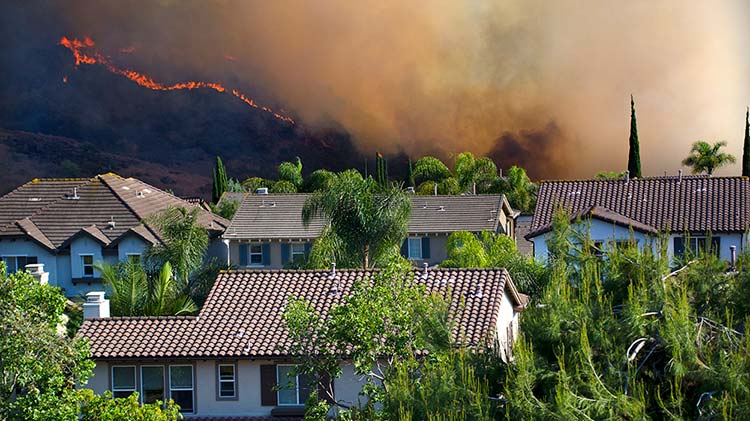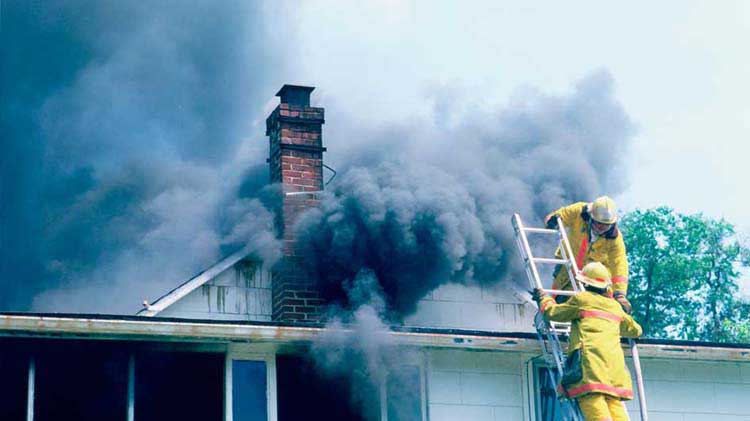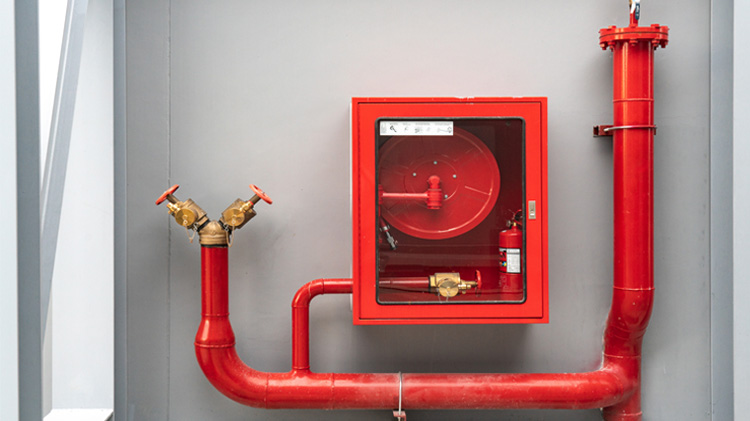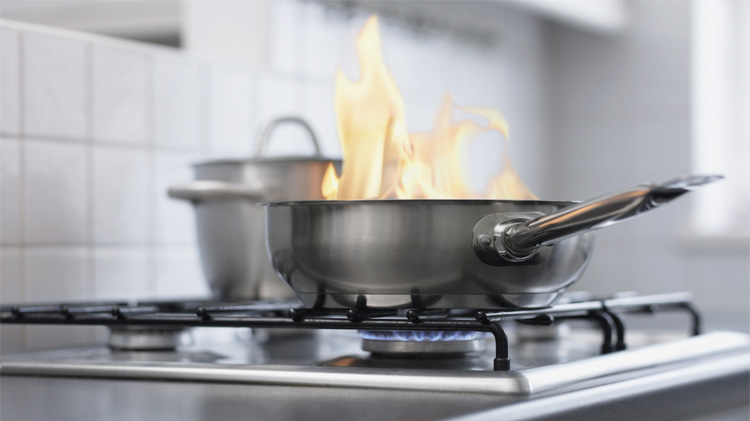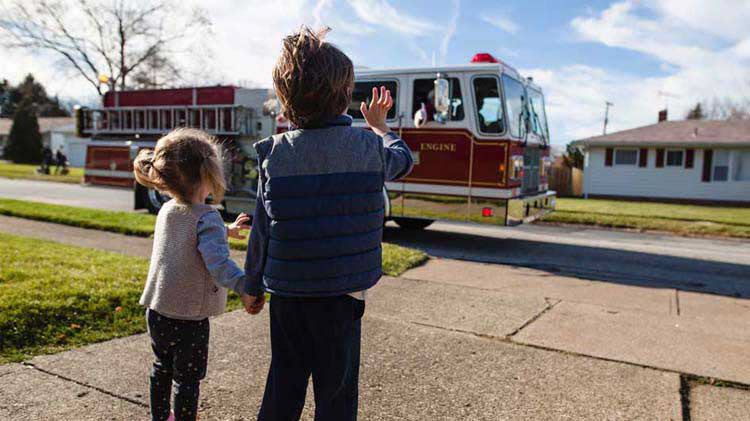Wildfire safety tips: What to do before and after a wildfire
Whether it’s preparing your home, evacuating safely or recovering, these wildfire safety tips can help minimize risks and support your recovery.
What is a wildfire?
Wildfires are fast-moving destructive forces that pose a severe risk to people, property and nature. The number and intensity of wildfires have grown in recent years. According to the National Interagency Fire Center (NIFC), wildfires burn over seven million acres of land yearly, with fire suppression costs averaging $3 billion. Being informed and knowing how to prepare for a wildfire is crucial to staying safe.
Wildfire preparedness
Preparation is key to wildfire safety. Taking proactive steps can help protect your family and property in a wildfire.
Create a wildfire evacuation plan
Having an evacuation plan is vital in wildfire preparedness. It serves as a blueprint for action when every second counts. Discuss the plan with your family, ensuring they know their roles and responsibilities.
- Schedule a meeting with all family members to create a fire escape plan.
- Identify two alternative meeting points in the event the family is separated.
- Practice evacuation drills regularly to familiarize everyone with the process.
- Establish a communication plan that includes meeting points and emergency contacts.
- Identify adequate water sources within 1,000 feet of your home, such as a well, hydrant or swimming pool.
- Create a home inventory list and review it with your insurance agent yearly to ensure you are properly insured.
Prepare an emergency kit
An emergency kit is vital during a wildfire evacuation. Here are some items to consider including:
- Drinkable water
- Non-perishable food and manual can opener
- Medications
- Glasses or contacts
- Moist towelettes and garbage bags
- Copies of important documents (IDs, medical cards, insurance papers and property deeds)
- First aid kit
- Flashlights with extra batteries
- Battery-powered radio
- Whistle or sound signaling device
- Portable chargers for mobile devices
- N95 masks or respirators
- Cash
- Clothing
- Pet food and other pet supplies (leash, harness and bowls)
- Local maps
Make a non-combustible hard space zone
Wildfire embers can travel several miles ahead of the fire front, accumulating around the exterior walls of homes and extending out 5 feet. In this critical zone, any combustible materials — such as vegetation, mulch and fences — are at risk of igniting, creating a direct pathway for flames to reach your home. Additionally, trees or branches that overhang this 5-foot area regularly shed debris, complicating maintenance efforts. When certain tree species catch fire, their proximity can pose a serious threat, allowing flames to spread directly to the house.
- Remove all vegetation within 5 feet of your home and decks, including all bushes, grass, artificial turf, flowers, succulents, fallen leaves/needles, etc. down to bare mineral soil.
- Trim trees or remove trees and branches that overhang the 5-foot area; the 5-foot buffer extends to the sky.
- Remove any vines from buildings, pergolas and fences within 5 feet of the building.
- Clear combustible materials like wood mulch within 5 feet of your home, decks and covered porches. Replace with hardscapes such as gravel, pavers, river rocks, DG base, steppingstones or concrete to create attractive noncombustible zone.
- Replace wood, vinyl, or composite fencing, posts, and gates located within 5 feet of the home with a noncombustible fence material, such as metal (aluminum, chain link, iron) or concrete.
Enhance your home’s fire safety
Making your home more fire-resistant requires a few strategic steps. Use fire-resistant materials wherever possible and adopt landscaping techniques to minimize fire risks.
- Install roofing and siding made from fire-resistant materials like metal, tile or fiber-cement if possible.
- Clear debris from gutters, eaves and roofs.
- Plant fire-resistant vegetation that retains moisture.
- Maintain smoke alarms and fire extinguishers in your home.
Stay informed
Staying informed about wildfire risks is essential for timely decisions. When a wildfire threat exists, use a battery-powered radio to stay aware of current information. Use reliable news sources and technology to keep yourself updated. Wildfires can move quickly. If authorities issue a wildfire evacuation order, leave the area immediately.
- Monitor the National Weather Service, local news channels and weather alerts for updates.
- Utilize apps like FEMA and local emergency notification services.
- Follow the social media channels of trusted organizations for real-time information.
Stay or evacuate
It is important to follow evacuation orders from local authorities without delay. Wildfires can change direction unpredictably, making time crucial.
Shelter in place
- Stay indoors.
- Close all windows, vents and doors to prevent smoke infiltration.
- Move flammable items like furniture, curtains and rugs away from windows.
- Shelter in rooms opposite where the fire is approaching.
- Keep away from outside walls.
Warning or voluntary evacuation
- Review the evacuation plan.
- Prepare the evacuation bag.
- Keep your gas tank full and withdraw cash. Power outages make pumps and ATMs unusable.
- Consider evacuating during the warning phase.
Evacuating
- Evacuate immediately if required by law.
- Use identified evacuation routes.
- Wear protective clothing like long sleeves, sturdy shoes and an N95 mask to help shield against heat and smoke exposure.
- Take your emergency kit, including vital documents, medications and survival supplies.
What to do after a wildfire
When the danger has passed, recovering from a wildfire can be overwhelming. Being informed after a wildfire can protect your health, property and financial well-being.
Return home safely
Once the authorities declare it safe, send text messages or use social media to contact friends and family. You should make calls only in an emergency since phone lines are often busy after a forest fire. Then, follow these steps upon re-entering your home:
- Inspect the property for hazards like live embers or damaged power lines. If you notice downed power lines or a gas smell, call the professionals before going in.
- The ground can contain heat pockets that could burn you or spark another fire, so avoid hot ash, charred trees, smoldering debris and live embers.
- Check for structural damage before entering.
- Watch for sagging floors and avoid putting weight on them.
- Wear protective clothing and gear (gloves and boots) during the clean-up process.
- Use an N95 mask when cleaning and dampen ash before sweeping to prevent it from becoming airborne. Avoid inhaling ash and fumes.
- Open windows and doors to help air your home out.
- Follow all proper generator safety tips.
- Wash any clothing and linens that may have been exposed to smoke.
- Check with your local health department about drinking water safety after a wildfire.
- Throw out any medication, food or drinks that were exposed to heat, ash, smoke or chemicals.
Document damages
Filing insurance claims requires organization and thorough documentation.
- Take detailed photos and videos of the damage.
- Create an inventory of damaged items.
- Contact your insurance provider promptly to start the claims process.
Repairing and rebuilding your home
The recovery process is challenging, but having a clear plan and dependable resources will help you rebuild quickly and safely. Hire licensed professionals to inspect home foundations, electrical wiring and plumbing for damage. Also, consider installing fire-resistant materials during the repair process to improve long-term safety.
Wildfires can be devastating, but understanding wildfire facts and taking proactive steps before and after a wildfire can help protect your loved ones and minimize damage. As you work to return home and recover, the American Red Cross has good information on how to clean up after a wildfire.
Preparedness starts with creating a solid evacuation plan, safeguarding your home and responding effectively when danger arises. Once the fire has passed, staying safe and documenting property damage may help ensure you can start over confidently.
The information in this article was obtained from various sources not associated with State Farm® (including State Farm Mutual Automobile Insurance Company and its subsidiaries and affiliates). While we believe it to be reliable and accurate, we do not warrant the accuracy or reliability of the information. State Farm is not responsible for, and does not endorse or approve, either implicitly or explicitly, the content of any third party sites that might be hyperlinked from this page. The information is not intended to replace manuals, instructions or information provided by a manufacturer or the advice of a qualified professional, or to affect coverage under any applicable insurance policy. These suggestions are not a complete list of every loss control measure. State Farm makes no guarantees of results from use of this information.
This article was drafted with the help of AI and reviewed by State Farm editors.
State Farm Fire and Casualty Company
State Farm General Insurance Company
Bloomington, IL
State Farm Florida Insurance Company
Tallahassee, FL
State Farm Lloyds
Richardson, TX
